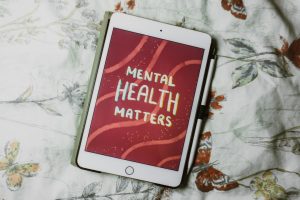10 Effective Stress Busters for a Calmer Life
Discover 10 effective stress busters for a calmer life. Embrace tranquility today and transform your daily routine with simple tips.
Deep Breathing Techniques
Understanding Deep Breathing
Deep breathing is a simple yet powerful technique that can help reduce stress and promote relaxation. By focusing on slow, deliberate breaths, you can activate the body’s natural relaxation response, which counteracts the stress-induced fight-or-flight reaction.
This technique involves inhaling deeply through the nose, allowing the chest and lower belly to rise, and exhaling slowly through the mouth.
Practicing deep breathing regularly can improve overall well-being and enhance mental clarity.
Benefits of Deep Breathing
Deep breathing offers numerous benefits, particularly in stress management. It helps lower heart rate, reduces blood pressure, and decreases the production of stress hormones.
This can lead to a calmer state of mind and improved focus.
Additionally, deep breathing increases oxygen supply to the brain, which can enhance cognitive function and boost energy levels. Regular practice can also improve emotional resilience, making it easier to cope with stressful situations.
How to Practice Deep Breathing
To practice deep breathing, find a quiet and comfortable place to sit or lie down.
Close your eyes and take a deep breath in through your nose, counting to four. Hold your breath for a moment, then exhale slowly through your mouth, counting to six.
Repeat this cycle for several minutes, focusing on the sensation of your breath and letting go of any distracting thoughts.
You can practice deep breathing anytime you feel stressed or anxious, or incorporate it into your daily routine for ongoing stress relief.
Incorporating Deep Breathing into Daily Life
Integrating deep breathing into your daily routine can be simple and effective. Start by setting aside a few minutes each day for dedicated practice, perhaps in the morning or before bed.
You can also use deep breathing techniques during stressful moments, such as before a presentation or after a difficult conversation.
Consider pairing deep breathing with other relaxation techniques, such as meditation or yoga, to enhance its effects. Over time, deep breathing can become a natural response to stress, helping you maintain a sense of calm and balance in your life.
Exercise and Physical Activity
Boosts Endorphin Levels
Engaging in regular exercise significantly increases the production of endorphins, often referred to as the body’s natural mood elevators.
These chemicals interact with receptors in the brain to reduce the perception of pain and trigger a positive feeling in the body. This natural high can help alleviate stress and promote a sense of well-being.
Improves Sleep Quality
Physical activity can enhance the quality of sleep, which is often disrupted by stress and anxiety.
Exercise increases the amount of deep sleep, the most physically restorative sleep phase. Better sleep helps regulate mood, improve concentration, and reduce stress levels.
Reduces Tension and Anxiety
Exercise acts as a powerful stress reliever by reducing levels of the body’s stress hormones, such as adrenaline and cortisol.
At the same time, it stimulates the production of endorphins, which are natural mood lifters. This dual effect helps to alleviate tension and anxiety.
Enhances Mood and Mental Health
Regular physical activity can have a profoundly positive impact on depression, anxiety, and ADHD.
It also relieves stress, improves memory, helps you sleep better, and boosts overall mood. Studies show that moderate intensity exercise is effective in improving mood and reducing symptoms of depression and anxiety.
Increases Energy Levels
Exercise can significantly boost energy levels by improving cardiovascular health and increasing endurance.
As your heart and lung health improve, you have more energy to tackle daily tasks, which can help reduce feelings of fatigue and stress.
Promotes Social Interaction
Participating in group exercises or team sports can provide a social outlet that helps reduce stress. Social interaction during physical activity can offer support, create a sense of belonging, and provide a distraction from daily stressors.
Encourages Mindfulness
Activities like yoga and tai chi incorporate mindfulness and meditation, which help focus the mind and create a sense of calm.
These exercises encourage participants to concentrate on their breathing and body movements, helping to reduce stress and promote relaxation.
Mindfulness and Meditation Practices
Understanding Mindfulness
Mindfulness is the practice of being present in the moment and fully engaging with the here and now. It involves paying attention to your thoughts, feelings, and sensations without judgment.
This practice can significantly reduce stress by helping individuals become more aware of their mental and emotional states, allowing them to respond more calmly to stressors.
Benefits of Meditation
Meditation is a powerful tool for stress reduction. Regular meditation practice can lower blood pressure, improve concentration, and enhance overall emotional health.
By focusing on a single point of reference, such as the breath, meditation helps quiet the mind, reducing the noise of stress and anxiety.
Simple Meditation Techniques
There are various meditation techniques that beginners can explore. One popular method is guided meditation, where an instructor leads you through the process, often focusing on relaxation and stress relief.
Another simple technique is mindfulness meditation, which involves sitting quietly and focusing on your breathing or a mantra.
Incorporating Mindfulness into Daily Life
Mindfulness can be integrated into everyday activities, making it a versatile stress buster. Practices such as mindful eating, where you focus on the taste, texture, and aroma of your food, can enhance the dining experience and reduce stress.
Similarly, mindful walking, where you pay attention to each step and your surroundings, can turn a simple walk into a calming practice.
Creating a Meditation Routine
Establishing a regular meditation routine can amplify its stress-reducing benefits. Start with short sessions, perhaps five to ten minutes a day, and gradually increase the duration as you become more comfortable.
Consistency is key, so try to meditate at the same time each day to build a habit.
Mindfulness Apps and Resources
For those new to mindfulness and meditation, numerous apps and online resources can provide guidance and structure. Apps like Headspace and Calm offer guided meditations, mindfulness exercises, and sleep aids designed to reduce stress and improve mental well-being.
Healthy Lifestyle Choices
1.
Regular Exercise
Engaging in regular physical activity is a powerful stress buster. Exercise releases endorphins, which are natural mood lifters.
Whether it’s a brisk walk, a yoga session, or a high-intensity workout, moving your body can help clear your mind and reduce stress levels.
2. Balanced Diet
Eating a well-balanced diet can have a significant impact on your stress levels.
Foods rich in omega-3 fatty acids, such as salmon and walnuts, and those high in antioxidants, like berries and leafy greens, can help combat stress. Avoid excessive caffeine and sugar, which can exacerbate stress symptoms.
3.
Adequate Sleep
Quality sleep is essential for managing stress. Lack of sleep can increase stress hormones and make it harder to cope with daily challenges.
Aim for 7-9 hours of restful sleep each night to rejuvenate your body and mind.
4. Mindfulness and Meditation
Practicing mindfulness and meditation can help you stay present and reduce stress.
These practices encourage relaxation and can improve your ability to manage stress by promoting a sense of calm and focus.
5. Social Connections
Building and maintaining strong social connections can be a great way to reduce stress.
Spending time with friends and family, or even engaging in community activities, can provide support and a sense of belonging.
6. Time Management
Effective time management can help alleviate stress by reducing the feeling of being overwhelmed.
Prioritize tasks, set realistic goals, and break larger projects into manageable steps to enhance productivity and reduce stress.
7. Hobbies and Leisure Activities
Engaging in hobbies and leisure activities can provide a healthy distraction from stress.
Whether it’s painting, gardening, or playing a musical instrument, these activities can offer a sense of accomplishment and joy.
8. Breathing Exercises
Deep breathing exercises can quickly reduce stress by promoting relaxation.
Techniques such as diaphragmatic breathing or the 4-7-8 method can help calm your nervous system and decrease stress levels.
9. Limit Screen Time
Excessive screen time, especially on social media, can increase stress and anxiety.
Set boundaries for screen use and take regular breaks to engage in offline activities that promote relaxation.
10. Professional Help
Seeking professional help from a therapist or counselor can be an effective way to manage stress.
Therapy provides a safe space to explore stressors and develop coping strategies tailored to your needs.
FAQ
Q1: How quickly can I expect to see results from implementing these 10 stress busters in my daily routine?
A1: The time it takes to see results from using stress busters can vary greatly from person to person. Some individuals may notice an immediate sense of relief after trying techniques such as deep breathing or a brief walk, while others might require a few weeks of consistent practice to experience significant changes. It’s important to be patient and persistent, as the cumulative effect of regularly practicing stress-reduction techniques can lead to more sustainable and long-term improvements in stress levels.
Q2: Are these 10 stress busters suitable for everyone, regardless of their lifestyle or health condition?
A2: While the 10 stress busters are generally considered safe and beneficial for most people, it’s essential to tailor them to your individual needs and circumstances. For instance, physical activities like yoga or exercise should be adjusted to match your fitness level and any existing health conditions. Similarly, if you have specific mental health concerns, consulting with a healthcare professional before adopting new stress management techniques is advisable. The key is to find a balance that works for you and complements your lifestyle.
Q3: How can I effectively integrate these stress busters into my busy schedule?
A3: Integrating stress busters into a busy schedule can be challenging, but it is feasible with some planning and prioritization. Start by identifying small pockets of time throughout your day where you can incorporate these techniques, such as during your morning routine, lunch break, or before bedtime. Techniques like deep breathing or mindfulness can be practiced in just a few minutes and require minimal setup. Additionally, consider combining stress busters with existing habits, such as listening to calming music during your commute or practicing gratitude while preparing meals. Consistency is key, so aim to make these practices a regular part of your routine.
Takeaway
“Ready to boost your well-being with a simple new habit? Start today by adding a 10-minute walk to your daily routine. Share this article with friends who could benefit too, and explore WHO or other trusted resources for more health tips. Your small steps can lead to big improvements in your overall health and happiness. Let’s take action together for a healthier future!”
References
- Calm is a wellness company offering evidence-based meditation tools for stress and sleep management.











Comments